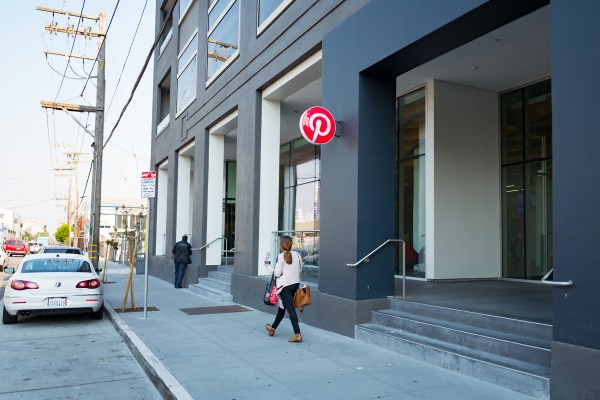Visual search engine Pinterest is rolling out new features this morning that will make it easier for people to purchase the products on its platform.
The $12 billion company, which has 250 million monthly active users, has rebuilt the infrastructure behind its product pins with a goal of making the mobile app and website more “shoppable,” per Pinterest’s head of shopping product Tim Weingarten.
The company says since it began testing the new features in the previous quarter, clicks on products to retail sites increased by 40 percent. That’s a big win for Pinterest, whose business model relies greatly on advertising revenue.
The three new features include up-to-date pricing and stock information on all product pins, with links that take pinners to the retailer’s website, plus a new “Products like this” category under each fashion and home decor pin, which includes stylistically similar products that Pinterest thinks that user will like. It’s also added a new shopping shortcut within the app that connects users to similar products to a given pin. That new feature is accessible when users hold down on any home or style pin and click on the price tag logo (second image below).
[gallery ids="1733233,1733234,1733235"]
“When you see something on Pinterest you’d like to own you should be able to buy it, or something just like it, that matches your unique style. That’s our vision for shopping with Pinterest,” Weingarten wrote in a blog post announcing the features. “Pinterest is like your personal stylist. We can give you recommendations for products to buy based on your unique taste and what’s trending, and show you a range of visual ideas.”
Pinterest has been trying to convert its users to buyers for a long time. Last year, the company launched Pinterest Lens, which lets users take a photo of something in their existing wardrobe or a cool pair of shoes they saw someone wearing on the subway, for example, upload it into the app and instantly view that product or similar ones.
The company has no choice but to beef up its e-commerce features, not only because it’s expected to make the transition into the public markets sometime in 2019 but because even larger players in the space, namely Facebook and Instagram, have begun integrating features that make it easier for their users to discover and consider purchases.
According to The New York Times, Pinterest is expected to bring in $700 million in revenue this year. To date, it’s secured more than $1 billion in venture capital funding, most recently raising $150 million at a $12.3 billion valuation.
